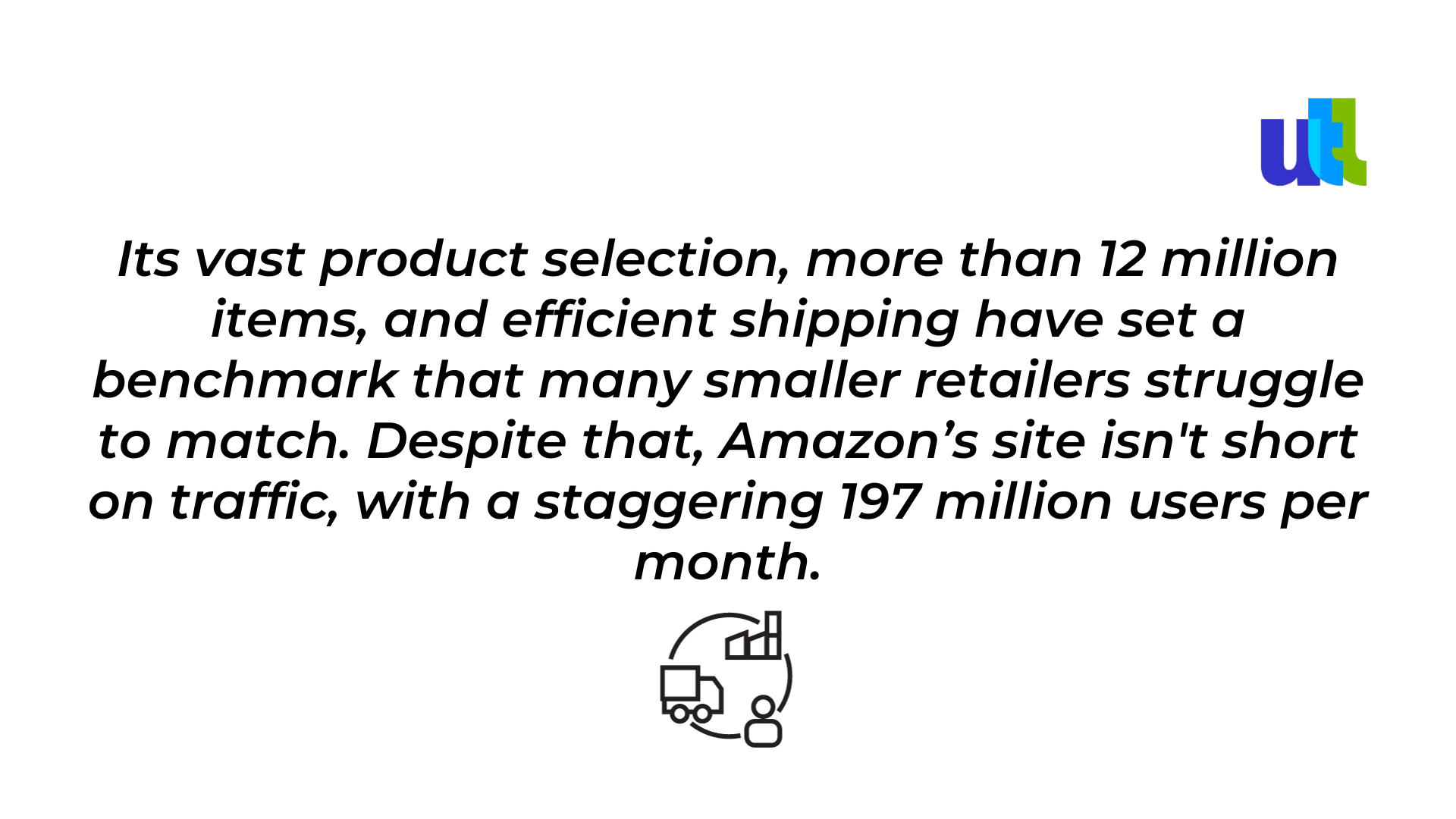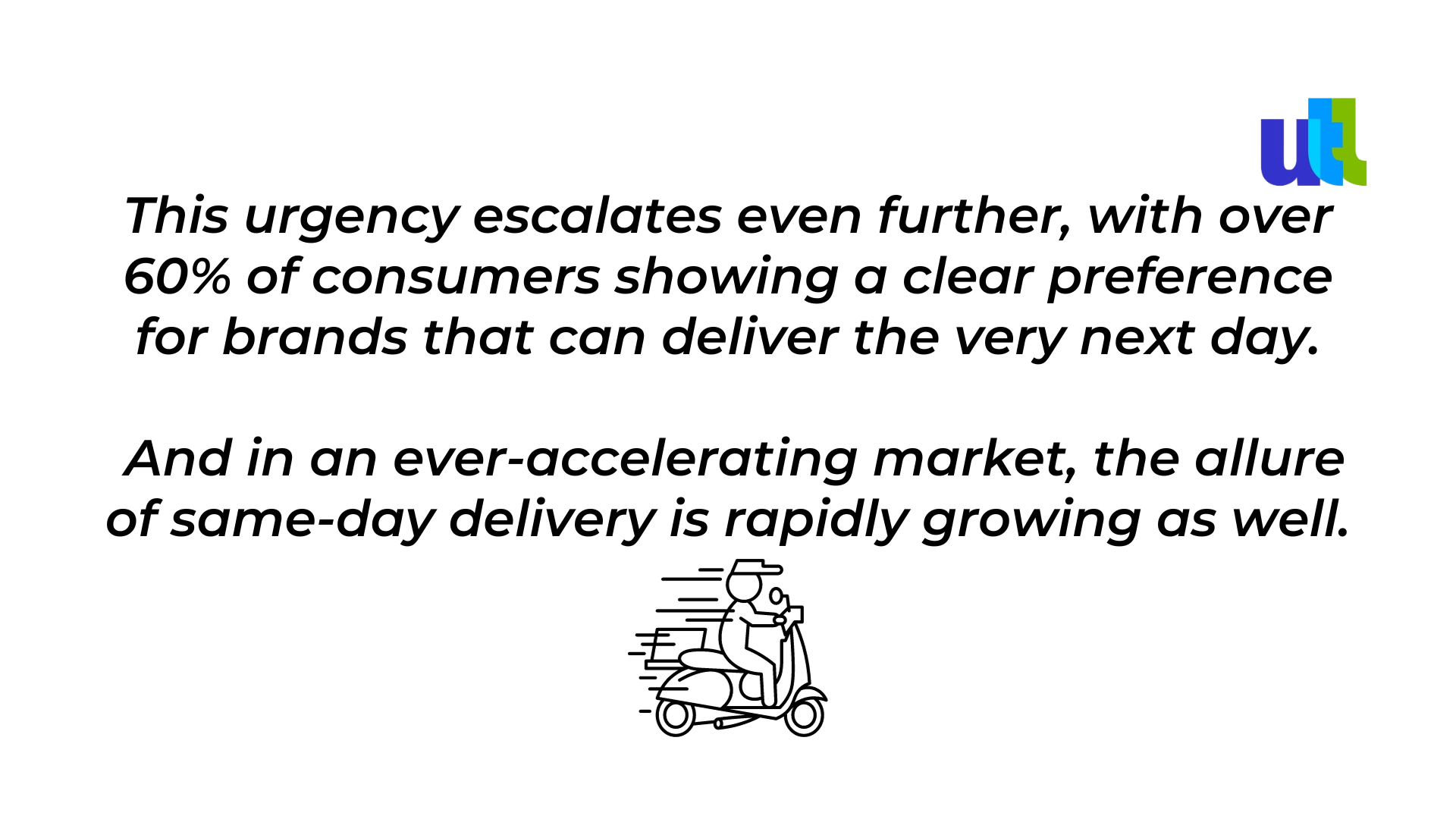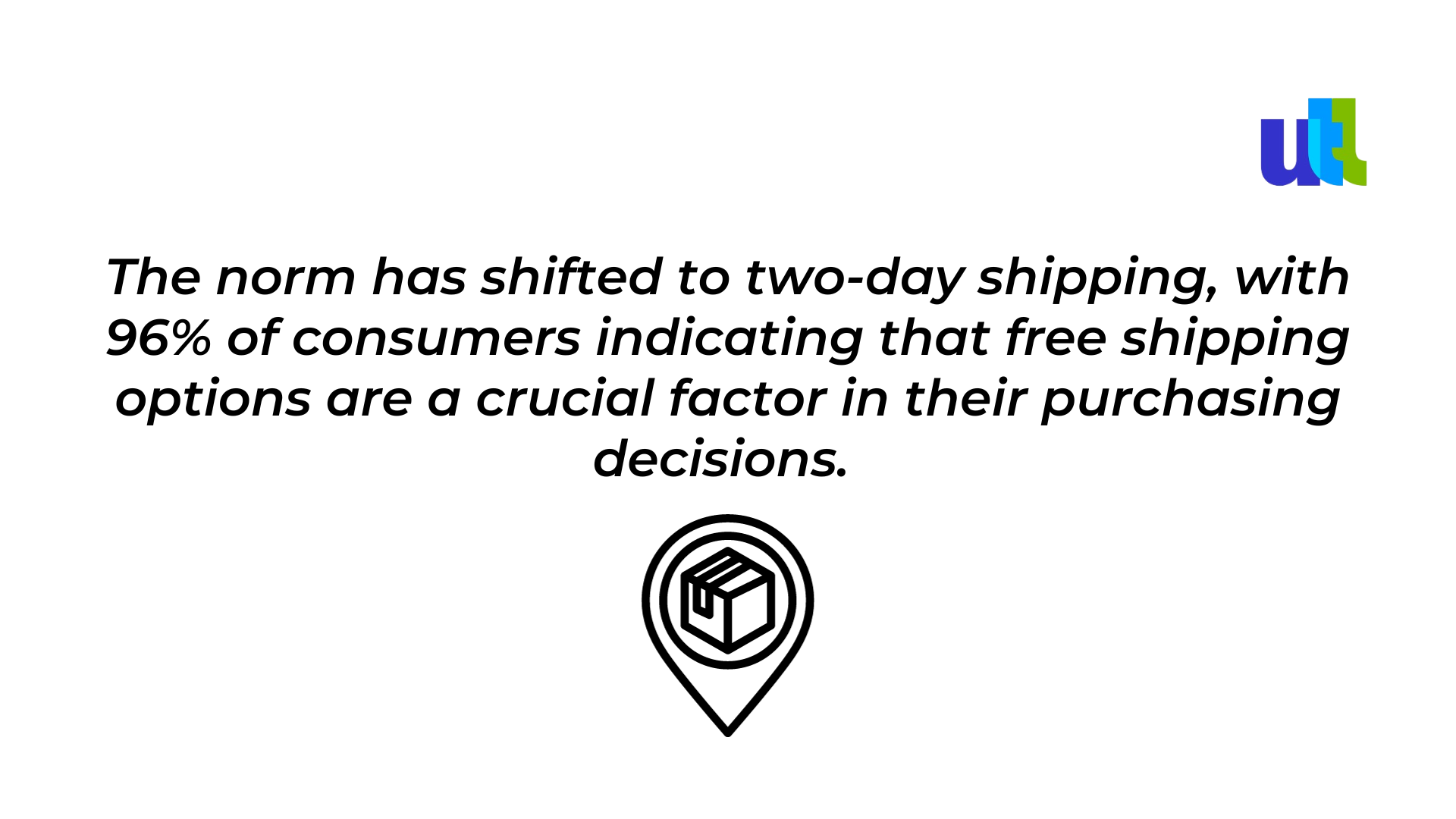In the dynamic world of e-commerce, customer expectations have undergone a significant transformation, reshaping the landscape of online shopping and delivery services. The surge in online shopping, driven by the ongoing COVID-19 pandemic, has not only highlighted the convenience of this mode of shopping but also underscored its safety benefits.
A key driver of this change is the vast information available to customers. With a simple online search, consumers can explore product features, compare prices, read reviews, and even catch deals with digital coupons, all before making a purchase decision. This wealth of information has elevated customer expectations, pushing e-commerce businesses to innovate continuously.
The third-party logistics (3PL) industry, experiencing a surge in demand, faces the challenge of meeting these heightened expectations. The pandemic has accelerated existing trends, with customers now demanding more personalized and efficient shopping experiences. This shift has placed a considerable emphasis on logistics companies to evolve rapidly.
A notable trend is the increasing expectation of rapid delivery, often same-day or next-day. This demand pressures 3PLs to enhance their operational efficiency, leveraging advanced technology to meet tight deadlines and manage expanding inventories efficiently.
Customization is another rising trend, encompassing everything from product kitting and personalized packaging to bespoke communication and marketing offers. This shift extends beyond traditional logistics roles, requiring a seamless and flawless delivery process.
Amazon's influence in setting high consumer expectations cannot be overstated.

This impressive reach and service level set by Amazon are reshaping consumer expectations across the board. A recent study revealed that 88% of consumers have heightened expectations for quicker shipping and delivery from all online retailers, influenced by their experiences with Amazon.
For smaller online retailers, meeting these expectations can be daunting, especially in terms of shipping capabilities. However, there are strategies to enhance customer satisfaction, such as creating branded tracking pages and optimizing website usability. Ensuring a user-friendly and efficient online shopping experience is crucial for converting first-time visitors into repeat customers.
Moreover, the expectation of free shipping presents a significant challenge for smaller retailers. Research indicates that shipping cost and speed are decisive factors for consumers. Many customers prefer longer delivery times overpaying for shipping, emphasizing the need for e-tailers to find innovative ways to reduce shipping costs.
E-commerce and logistics are at a pivotal point, with customer expectations driving significant changes in the industry. Online retailers and logistics providers must adapt to these evolving demands, focusing on speed, efficiency, customization, and cost-effective shipping solutions to stay competitive and meet the modern shopper's needs.
Consumer expectations by the numbers
As we delve deeper into the evolving e-commerce and logistics landscape, it becomes increasingly clear that understanding consumer expectations is not just a requirement, but a key to unlocking success in this digital age.
The need for speed in delivery has never been more distinct. Consumers do not have the patience to wait for 4-5 days. In today's fast-paced world, a significant share of consumers, about one in four, will only entertain the idea of a purchase if it promises delivery within 2 days or less.

But here's the twist: while consumers crave lightning-fast delivery, they are not so keen on paying for it. Over half of shoppers will drop a shopping cart if faced with additional shipping costs. Yet, paradoxically, two-thirds of these consumers would willingly pay a bit more to get their hands on their package sooner. It’s a delicate balance between the desire for speed and the aversion to extra fees.
Let's talk about loyalty. In a world crowded with brand options, consumers are constantly on the lookout for reasons to stay loyal. And here's the deal-breaker: 84% of them will bid farewell to a brand after just one poor delivery experience. Furthermore, honesty is the best policy when it comes to delivery costs and timings – about 60% of consumers stick with retailers who are transparent in this regard.
This compelling data paints a clear picture: in the dynamic world of e-commerce, meeting and exceeding these specific consumer expectations isn't just playing the game – it's changing it.
The new reality of e-commerce
We are witnessing a significant and lasting shift in the consumer economy, driven by mobile technology and accelerated by the pandemic. Consumers are increasingly turning to online shopping, a trend that was once thought unlikely. This shift has given rise to numerous direct-to-consumer digital retailers, challenging traditional brick-and-mortar stores. Notably, over half of consumers now prefer buying directly from brands, a preference that's even stronger among younger shoppers.
Amazon remains a frontrunner, capturing a substantial portion of the U.S. online market. Its platform sets high standards for convenience, speed, and reliability, influencing consumer expectations. With Amazon Prime, consumers expect fast, often free delivery, setting a benchmark that all online retailers are measured against.
In this evolving retail landscape, the challenge for shippers and carriers is to adapt and meet both consumer and retailer needs effectively. This involves navigating new shopping preferences, rapid delivery demands, and evolving fulfillment infrastructures. A key strategy lies in developing an integrated supply chain that delivers on retailer promises while maintaining competitive pricing.
The traditional model of stocking physical shelves and relying on in-store shoppers is becoming outdated. With the surge in e-commerce, powered by mobile devices and social media, the power dynamics have shifted. Consumers now dictate when, where, and how they shop, with a significant majority favoring online shopping. In fact, 96% of Americans have made an online purchase, and over half prefer this mode of shopping.
New supply chain management trends
In the fast-paced world of e-commerce, shippers are navigating tighter turn times and stricter compliance, striving to enhance their brand presence from online platforms to customer homes. With the stakes higher than ever, efficiency and speed are non-negotiable, as consumers now expect rapid delivery as standard service.

In fact, some are willing to pay more upfront if it means avoiding shipping fees.
Retailers must innovate or risk becoming obsolete, providing physical and digital shopping environments that deliver to consumer demands for choice, convenience, and customization. Central to this is a resilient supply chain capable of swift and cost-effective delivery.
Fluctuations in demand, such as those caused by a viral social media post or unforeseen events, underscore the need for a flexible and transparent supply chain. Retailers need to employ the right mix of personnel, processes, and technology to stay aligned with the evolving retail scene, which now includes services like reverse logistics and last-mile delivery solutions.
Harnessing technology and tracking for customer satisfaction
Advancements in distribution and supply technology are vital for meeting the high expectations of today’s online shoppers. Retailers are urged to partner with shippers who utilize cutting-edge warehouse robotics and digital supply networks to streamline the shipping process.
These networks improve business operations and address customer issues by integrating new technologies like blockchain, machine learning, and the Internet of Things, creating an interconnected system for seamless information flow.
In package tracking, technology is also reshaping consumer expectations. Nowadays customers now monitor their orders immediately after purchase, and shippers are enhancing the customer experience by enabling advanced tracking capabilities.
Retailers can gain an edge by partnering with third-party logistics providers that offer sophisticated transportation management services, including software systems and tools for real-time package tracking, keeping customers informed throughout the delivery journey.
The last-mile delivery: The competitive edge in e-commerce
As e-commerce thrives and customer expectations soar, last-mile delivery becomes a pivotal battleground for competitive advantage. No longer just a logistical necessity, it's transforming into a strategic asset that drives brand growth, particularly in dense urban areas crowded with potential customers.
In the race to grow your brand, last-mile delivery stands out as a defining factor. Consumers expect—and remember—the delivery experience, with great execution fostering loyalty and repeat business. Logistics leaders acknowledge this segment's inefficiency, with over half of shipping costs attributed to it. Balancing service quality with cost is a complex challenge.
Effective last-mile strategies include establishing micro-hubs to reduce delivery distance, offering dynamic response to demand fluctuations, ensuring total visibility for shippers and consumers alike, optimizing routes through data analytics, and providing round-the-clock responsiveness.
Innovations in last-mile fulfillment
To address rising customer demands, the logistics industry is turning to emerging technologies. These innovations are critical in final-mile fulfillment, poised to revolutionize how products reach consumers.
The significance of final-mile delivery has skyrocketed, with e-commerce sales jumping from under 5% to 15% in recent years. This segment now commands over half of transportation spending due to customer demand volatility, leading to frequent underutilization of delivery capacity.
Final-mile delivery, while the shortest segment, offers a prime opportunity for customer satisfaction. A negative delivery experience can deter future purchases, making efficient and cost-effective final-mile operations essential.
Expanding final-mile options for enhanced customer satisfaction
Customer expectations in final-mile delivery have evolved, with a shift toward diverse delivery points beyond the home, such as post offices and in-store pickups. The delivery experience now demands flexibility, real-time tracking, and proactive communication.
Sustainability and personalization are becoming integral to the delivery experience, with customers seeking eco-friendly practices and tailored delivery options. Final-mile delivery is now about crafting a seamless, efficient, personalized journey.
Innovations and the future
The future of final-mile delivery is marked by transformative technologies such as autonomous vehicles and drones, micro-fulfillment centers for rapid deliveries, and data-driven personalization. These advancements are setting the stage for a future where final-mile deliveries are not just efficient but personalized to individual preferences.
Navigating towards excellence in customer delivery experiences with UtahTechLabs
In today's market, there's a notable gap between what customers expect and what many last-mile delivery services can provide. For brands to flourish amidst this disruption, they must not only meet but exceed these expectations. The benchmark set by the 'Amazon experience' is now the bare minimum for last-mile delivery excellence.
Your brand deserves a delivery partner that doesn't just match this high standard but surpasses it, enhancing your brand's reputation through flawless on-time delivery, consistent reliability, and complete transparency. UtahTechLabs stands ready to be that partner, offering services that extend beyond industry norms to elevate your brand. Let UtahTechLabs guide you to your last-mile delivery, transforming how your customers experience your brand.
For free consultation on e-Commerce logistics, click here.
----------------------------------------------------------------------------------------------
View the full presentation:
WRITTEN BY
Milda Butkeviciute
2023-11-23


































































































































































































